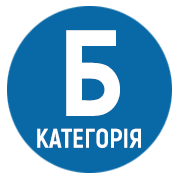METHODOLOGICAL ASPECTS OF CREATING FAIRY TALES AS A MEDIA EDUCATIONAL PRODUCT BY CHILDREN OF PRESCHOOL AND PRIMARY SCHOOL AGE
DOI:
https://doi.org/10.25128/2415-3605.21.1.20Keywords:
медіаосвіта, медіаграмотність, сторітелінг, казкотворення, медіаосвітня казка, діти дошкільного та молодшого шкільного віку, методикаAbstract
Methodological peculiarities of creating fairy tales at preschool and primary education institutions have been investigated. The new State Standards for Preschool and Primary Education provide the development of children’s creativity and innovation. The importance of media education is growing due to the development of innovative media products, which is a fairy tale. It has been stressed on creating fairy tales as a component of storytelling. Emphasis has been placed on the fact that the ability to create a fairy tale is one of the learning outcomes of primary school students in accordance with the Typical educational programs. The objective of the article is to substantiate the methods of creating fairy tales as a media educational product of preschool and primary school age children in collaboration with parents and teachers. The following methods have been used to achieve the goal: the analysis of normative documents and pedagogical sources on the research problem; comparative-contrast, generalizations (for comparison of storytelling and creating fairy tales); surveys, interviews (to develop and test the effectiveness of methods of creating fairy tales as a media educational product). The origins of the creating fairy tales by children in the middle of the XXth century have been demonstrated. The common and distinctive features of traditional creating fairy tales and storytelling have been clarified. Contradictions regarding the use of storytelling have been identified, in particular between the growing interest in digital storytelling and the requirements for time-limited contact of children with gadgets and other technical devices. Four stages have been defined in the developed methods. They are the following: 1. Preparatory – choosing a favorite fairy tale. 2. Search – finding a situation in which a child becomes a participant. 3. Implementation – the child’s “entry” into a fairy tale, the design of his/her activities and the role or the profession in a fairy tale. 4. Final – the analysis of the child’s and other characters’ behavior in a fairy-tale situation. The ability to produce creatively media products as an indicator of media literacy formation has been reflected. Specific examples illustrate the ways to transform famous fairy tales into a new way. Emphasis has been placed on media educational tales as a means of media education at preschool and primary education institutions. The advantages of the developed methods of creating fairy tales have been shown: it allows parents, children and kindergarten teachers/teachers in partnership to transform well-known fairy tales in a new way, to implement the function of protection against harmful influences of new media, to strengthen family relations and family ties with preschool and primary education institutions, to improve media culture. The results of a survey of preschoolers’ parents on reading and creating fairy tales have been presented.
References
Bazovyi komponent doshkilnoi osvity (Derzhavnyi standart doshkilnoi osvity) [Basic Component of Preschool Education (State Standard of Preschool Education)]. Zatverdzheno nakazom Ministerstva osvity i nauky Ukrainy vid 12.01.2021 r. No 33. URL: https://mon.gov.ua/storage/app/media/rizne/2021/12.01/nakaz-33-bazovyy-komponent-doshk-osv.pdf
Danyliak R. Z. Shliakhy udoskonalennia moralnoho vykhovannia molodshykh shkoliariv zasobamy vitchyznianoi dytiachoi periodyky [The ways to improve the moral education of primary school children by means of national children’s periodicals]. Molod i rynok: shchomisiachnyi naukovo-pedahohichnyi zhurnal. 2016. No 6 (137). S. 124–128.
Derzhavnyi standart pochatkovoi osvity [State Standard of Primary Education]: zatv. postanovoiu Kabinetu Ministriv Ukrainy vid 21.02.2018 r. N. 87. URL: https://www.kmu.gov.ua/ua/npas/pro-zatverdzhennya-derzhavnogo-standartu-pochatkovoyi-osviti
Krutii K., Zdanevych L. Storitellinh: mystetstvo rozpovidannia, abo yak zatsikavyty y motyvuvaty ditei [Storytelling: the art of telling, or how to interest and motivate children]. Doshkilne vykhovannia. 2017. N. 7. S. 2–5.
Kuzma I. I. Mediaosvita v zakladakh doshkilnoi ta pochatkovoi osvity [Media education at preschool and primary education institutions]: metodychni rekomendatsii. Ternopil: Vektor, 2020. 114 s.
Sukhomlynskyi V. O. Sertse viddaiu ditiam [My heart I give to children]. Vybrani tvory [Selected works]. V 5 t. T. 3. Kyiv: Rad. shkola, 1977. S. 7–279.
Typova osvitnia prohrama, rozroblena pid kerivnytstvom O. Ya. Savchenko. 3–4 klas. [A typical educational program developed under the direction of O. Savchenko]. Zatverdzheno Nakazom Ministerstva osvity i nauky Ukrainy vid 08.10.2019 r. N. 1273. URL: https://mon.gov.ua/storage/app/media/zagalna%20serednya/programy-1-4-klas/2020/11/20/Savchenko.pdf
Yankovych O. I. Moralne vykhovannia uchniv molodshoho shkilnoho viku v protsesi realizatsii mediaosvity [Moral education of primary school students in the process of media education implementation]. Pedahohichnyi almanakh: zbirnyk naukovykh prats. Kherson, 2017. Vyp. 33. S. 18–24.
Farmer L. Using technology for storytelling: Tools for children. New Review of Children’s Literature and Librarianship. 2004. Vol. 10 (2). P. 155–168. DOI: 10.1080/1361454042000312275
Kervin L., Mantei J. Digital storytelling: Capturing children’s participation in preschool activities. Issues in Educational Research. 2016. 26 (2). P. 225–240. URL: http://www.iier.org.au/iier26/kervin.pdf
Mikelic Preradovic N., Lesin G., Boras D. Introduction of Digital Storytelling in Preschool Education: a Case Study from Croatia. Digital Education Review. 2016. P. 94–105. URL: https://files.eric.ed.gov/fulltext/EJ1125505.pdf
Tereshchuk H. V., Kuzma I. I., Yankovych O. I., Falfushynska H. I. The formation of a successful personality of a pupil in Ukrainian primary school during media education implementation. Cloud Technologies in Education. Proceedings of the 6th Workshop CTE 2018 (Kryvyi Rih, Ukraine, December 21, 2018) / Eds. Kiv, A. E., Soloviev, V. N. CEUR-WS.org, online. P. 145–158. URL: http://ceur-ws.org/Vol-2433/paper08.pdf
Yankovych O. I., Chaika V. M., Ivanova T. V., Binytska K. M., Kuzma I. I., Pysarchuk O. T., Falfushynska H. I. Technology of forming medialiteracy of children of the senior pre-school age of Ukraine. Cloud Technologies in Education. Proceedings of the 6th Workshop CTE 2018 (Kryvyi Rih, Ukraine, December 21, 2018) / Eds. Kiv, A. E., Soloviev, V. N. CEUR-WS.org, online. P. 126–144. URL: http://ceur-ws.org/Vol-2433/paper07.pdf






